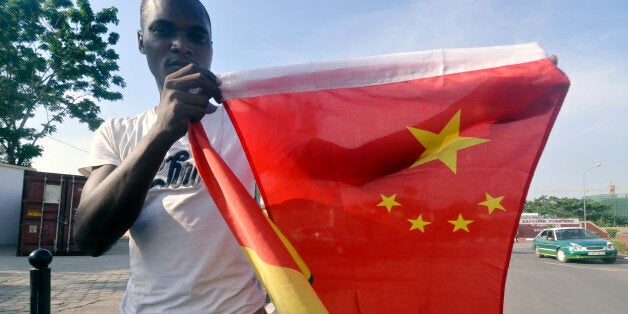
Dambisa Moyo is the CEO and founder of the Mildstorm Group and author of "Winner Take All: China's Race for Resources and What it Means for the World" and "Dead Aid: Why Aid is Not Working and How There is a Better Way for Africa."
As Chinese President Xi Jinping pointedly noted in a recent meeting in Beijing with visiting Senegalese President Macky Sall, this year marks a milestone in China-Africa trading relations.
It is the year that trade between China and Africa has surpassed $200 billion, making China Africa's biggest trading partner, up from just $10 billion in 2000.
"That all stands witness to the endlessly renewed vitality of Sino-African friendship, to the scale of the potential for co-operation and the excellent outlook for the new kind of Sino-African strategic partnership," Xi told Sall.
Through a complex network of state-owned enterprises, and direct government engagement, Sino-Africa corridors represent a brisk trade in all manner of primary goods such as foodstuffs, minerals and oil.
It is not just Africa, where China's trading mettle is being felt. Today China is the largest trading partner of emerging countries as disparate and far-flung as Brazil, India, Russia and South Africa. With as many as 64 countries forecasted to have a high risk of social and political unrest in 2014 -- more than at any other time in the past decade -- Chinese trade flows are not only a welcome investment in the global growth and poverty reduction agenda, but they can also play an enormous impact in staving off civil unrest and instability by creating local job opportunities for the poorest around the world.
Over the last decade across Africa, and beyond, China's foray beyond her borders has rested on powerful three-pronged approach of trade, foreign direct investment, and aid largesse, which although declining in importance, remains sizeable.
It is these substantial flows that have placed China firmly at the helm of the discourse of economic development in many emerging economies. For example, estimates from my own country of origin, Zambia, indicate that Chinese foreign flows (roughly US$2 billion last year) account for at 10 percent of the country's GDP; and a significant proportion of government purse. This leaves Zambian policymakers, and others elsewhere, the impression that China will play an ever-expanding role in driving economic growth and reducing global poverty, and less so traditional development partners (such as developed countries and multilateral institutions).
Since 90 percent of the world's population lives in the developing world, China's imprimatur in global trade and investment is of particular importance across the largest emerging market economies, with populations over 50 million, where growth has stalled markedly from the high single digits/even double digit GDP registered in recent decades. All of Argentina, Brazil, Colombia, India, Indonesia, Mexico, Russia, South Africa, Turkey and Venezuela, are forecasted to grow at around 3 percent growth this year, falling well below the 7 percent mark international development agencies deem necessary to make a meaningful dent in poverty.
Thus policymakers in these countries, and others too, turn to China to help combat many of the hallmarks of economies in transition, such as dilapidated and non-existent infrastructure, stubborn unemployment, particularly among the youth, and woefully inadequate social services in education and health.
According to the Heritage Foundations' Investment tracker, 2013 saw approximately U.S. $85 billion of Chinese foreign investment distributed across the world. While it is true that in prior years China's investment has traditionally tended to be skewed towards natural resource sectors, there is now notable diversification across the country's investment portfolio. China's investments are legendary and her strategy, not just across regions, but also sectors as disparate as real estate, banking, finance, insurance, logistics and retail is striking.
More generally, China's worldwide infrastructure build-out has delivered the full complement of roads, ports, railways, airports and power stations; showing an eagerness to invest in infrastructure even where the private sector tends to be deterred due to relatively low return profile and project maturities that can run over 50 years. Relying on China to finance development and combat these trenchant problems bears significant risks. After all, it is no secret that China's economic growth profile has slowed considerably, and now rests below recent historic highs (albeit to around 7 percent per annum). Moreover, significant challenges remain around restructuring an economy that is now feeling the weight of an enormous debt burden, and a property bubble which could set back its own growth trajectory. A China slowdown could also be the basis of for a change in policy stance from one of outward investment to capital being redirected back home. Such an about-face would leave many countries vulnerable and set back many countries' development agendas.
China's outward strategy is also not without its controversies. Accusations of dumping, price fixing, neo-colonialism, and use of prisoners in key investment projects are well-known, if often hard to prove. These critiques suggest that the trend towards an equilibrium in which global flows are defined by China will not be linear or costless, but fraught with challenges.
On balance, and for now, however, China remains a potent economic growth engine and a crucially important catalyst for poverty reduction across the world, and this is likely to remain true over the next decade. And regions such as Africa, home to the largest amount of untilled arable land left on earth, have much to gain from cooperation and engagement with China.